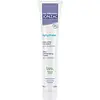What's inside
What's inside
 Key Ingredients
Key Ingredients

 Benefits
Benefits

 Concerns
Concerns

 Ingredients Side-by-side
Ingredients Side-by-side

Water
Skin ConditioningGlycerin
HumectantIsopropyl Palmitate
EmollientCetearyl Alcohol
EmollientCeteareth-20
CleansingPanthenol
Skin ConditioningNiacinamide
SmoothingTocopheryl Acetate
AntioxidantDimethicone
EmollientPersea Gratissima Oil
Skin ConditioningHelianthus Annuus Seed Oil
EmollientPantolactone
HumectantGlyceryl Stearate
EmollientSodium Benzoate
MaskingBenzyl Alcohol
PerfumingCitric Acid
BufferingWater
Skin ConditioningAnthemis Nobilis Flower Water
MaskingMalva Sylvestris Leaf Water
Skin ConditioningHamamelis Virginiana Water
AstringentCaprylic/Capric Triglyceride
MaskingGlycerin
HumectantOctyldodecanol
EmollientCoco-Caprylate/Caprate
EmollientSorbitan Olivate
EmulsifyingCetearyl Olivate
Cetearyl Alcohol
EmollientMagnesium Aluminum Silicate
AbsorbentGlyceryl Stearate Citrate
EmollientSodium Levulinate
Skin ConditioningXanthan Gum
EmulsifyingSodium Benzoate
MaskingGlyceryl Caprylate
EmollientGlyceryl Undecylenate
EmollientParfum
MaskingHelianthus Annuus Seed Oil
EmollientPhytic Acid
Tocopherol
AntioxidantSodium Hydroxide
BufferingLactic Acid
BufferingWater, Anthemis Nobilis Flower Water, Malva Sylvestris Leaf Water, Hamamelis Virginiana Water, Caprylic/Capric Triglyceride, Glycerin, Octyldodecanol, Coco-Caprylate/Caprate, Sorbitan Olivate, Cetearyl Olivate, Cetearyl Alcohol, Magnesium Aluminum Silicate, Glyceryl Stearate Citrate, Sodium Levulinate, Xanthan Gum, Sodium Benzoate, Glyceryl Caprylate, Glyceryl Undecylenate, Parfum, Helianthus Annuus Seed Oil, Phytic Acid, Tocopherol, Sodium Hydroxide, Lactic Acid
 Reviews
Reviews

Ingredients Explained
These ingredients are found in both products.
Ingredients higher up in an ingredient list are typically present in a larger amount.
Cetearyl alcohol is a mixture of two fatty alcohols: cetyl alcohol and stearyl alcohol. It is mainly used as an emulsifier. Emulsifiers help prevent the separation of oils and products. Due to its composition, it can also be used to thicken a product or help create foam.
Cetearyl alcohol is an emollient. Emollients help soothe and hydrate the skin by trapping moisture.
Studies show Cetearyl alcohol is non-toxic and non-irritating. The FDA allows products labeled "alcohol-free" to have fatty alcohols.
This ingredient is usually derived from plant oils such as palm, vegetable, or coconut oils. There is debate on whether this ingredient will cause acne.
Due to the fatty acid base, this ingredient may not be Malassezia folliculitis safe.
Learn more about Cetearyl AlcoholGlycerin is already naturally found in your skin. It helps moisturize and protect your skin.
A study from 2016 found glycerin to be more effective as a humectant than AHAs and hyaluronic acid.
As a humectant, it helps the skin stay hydrated by pulling moisture to your skin. The low molecular weight of glycerin allows it to pull moisture into the deeper layers of your skin.
Hydrated skin improves your skin barrier; Your skin barrier helps protect against irritants and bacteria.
Glycerin has also been found to have antimicrobial and antiviral properties. Due to these properties, glycerin is often used in wound and burn treatments.
In cosmetics, glycerin is usually derived from plants such as soybean or palm. However, it can also be sourced from animals, such as tallow or animal fat.
This ingredient is organic, colorless, odorless, and non-toxic.
Glycerin is the name for this ingredient in American English. British English uses Glycerol/Glycerine.
Learn more about GlycerinHelianthus Annuus Seed Oil is the oil derived from the seeds of a Sunflower. Sunflower seed oil is non-fragrant. It is an emollient, meaning it helps to soften the skin.
Sunflower seed oil contains many fatty acids. The fatty acids found in sunflower seeds include (from highest amount to least): linoleic acid, myristic acid, palmitic acid, stearic acid, arachidic acid, oleic acid, and linolenic acid.
These fatty acids help the skin create ceramides. Ceramides play a role in repairing the skin barrier.
Helianthus Annuus Seed Oil helps moisturize the skin. This in turn helps the skin look more rejuvenated and smoother.
Sunflowers are rich in vitamin E.
Historians believe Indigenous cultures of North America domesticated sunflowers before corn. Thus they relied on sunflower oil for a variety of uses. One such use is moisturizing skin and hair.
Sunflower seed oil may not be fungal acne safe. We recommend speaking with a professional if you have any concerns.
Learn more about Helianthus Annuus Seed OilSodium Benzoate is a preservative. It's used in both cosmetic and food products to inhibit the growth of mold and bacteria. It is typically produced synthetically.
Both the US FDA and EU Health Committee have approved the use of sodium benzoate. In the US, levels of 0.1% (of the total product) are allowed.
Sodium benzoate works as a preservative by inhibiting the growth of bacteria inside of cells. It prevents the cell from fermenting a type of sugar using an enzyme called phosphofructokinase.
It is the salt of benzoic acid. Foods containing sodium benzoate include soda, salad dressings, condiments, fruit juices, wines, and snack foods.
Studies for using ascorbic acid and sodium benzoate in cosmetics are lacking, especially in skincare routines with multiple steps.
We always recommend speaking with a professional, such as a dermatologist, if you have any concerns.
Learn more about Sodium BenzoateWater. It's the most common cosmetic ingredient of all. You'll usually see it at the top of ingredient lists, meaning that it makes up the largest part of the product.
So why is it so popular? Water most often acts as a solvent - this means that it helps dissolve other ingredients into the formulation.
You'll also recognize water as that liquid we all need to stay alive. If you see this, drink a glass of water. Stay hydrated!
Learn more about Water